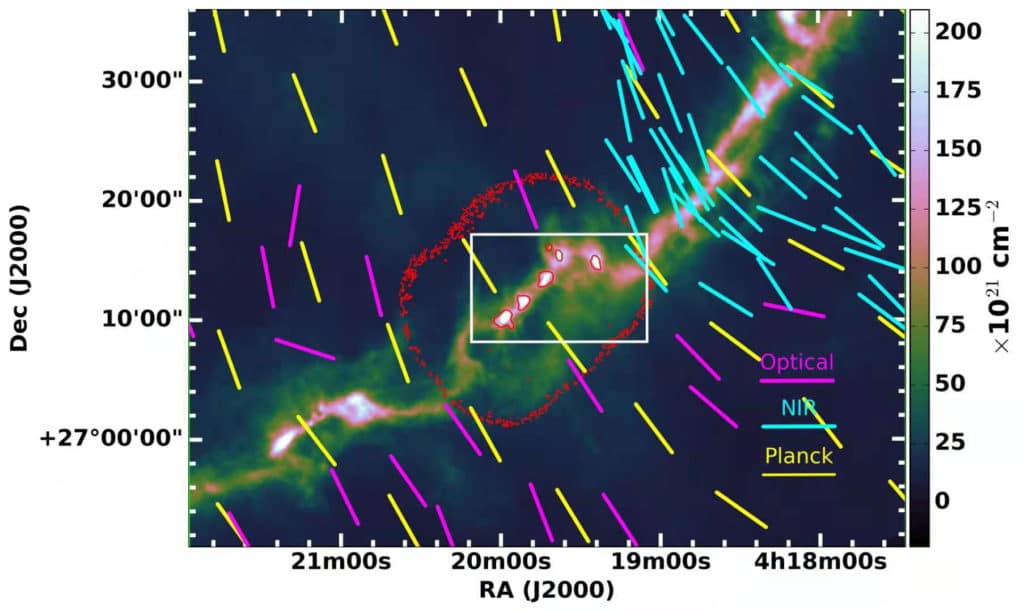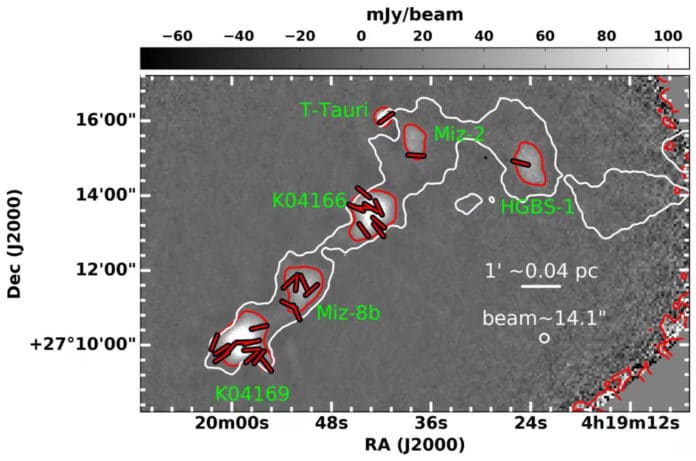Magnetic fields are present almost everywhere in the universe and play a vital role in all medium interstellar dynamics.
Although there are several questions like how solar-type stars form out of magnetized molecular clouds, whether the role of magnetic fields changes at various scales and densities of molecular clouds, and what factors can change the morphology of magnetic fields in low-mass dense cores remain unclear.
A new study has partially answered these questions. It reveals the diverse magnetic field morphologies in solar-type star-forming cores in the Taurus B213 region.
For the study, scientists used high-resolution and sensitive 850-micron dust emission polarization data acquired by the James Clerk Maxwell Telescope (JCMT). .15:21 02-06-2021
Taurus is a star-forming region about 450 light-years away. The B211/B213 filament in the Taurus Molecular Cloud is an example of how the material along filaments is not static.
Dr. Eswaraiah Chakali, lead author of the study, said, “Although formed out of the same filamentary cloud, Taurus/B213, among the three dense cores having more polarization measurements, only one remembers the relatively uniform large-scale magnetic field threading the parental cloud.”
This is precisely opposite to expectations based on the theory that magnetic fields regulate star formation. If a large-scale magnetic field dominates all through cloud accumulation, core-collapse, and star formation, the mean position angle of the magnetic field ought to be similar across different spatial scales.
Further analysis of the gas velocity gradient revealed that the kinematics due to gas accretion flows onto the parental filament could have altered the magnetic field configuration.
Prof. Li Di, a co-corresponding author of the study, said, “Even in the presence of substantial magnetic flux, local physical conditions can significantly affect magnetic field morphology and their role in star formation.”

Prof. Qiu Keeping of Nanjing University, co-PI of the BISTRO project and a co-author of the study, said, “Our current observations represent one of the deepest sub-millimeter polarimetry images ever taken using a single dish telescope toward a Galactic region.”
Prof. Li Di also highlighted “more comprehensive analyses, in combination with Planck data and stellar polarimetry, may give more insights into the evolution of magnetic fields in this stereotypical low-mass star-forming region.”
Journal Reference:
- Eswaraiah Chakali et al., The JCMT BISTRO Survey: Revealing the Diverse Magnetic Field Morphologies in Taurus Dense Cores with Sensitive Submillimeter Polarimetry, The Astrophysical Journal Letters (2021). DOI: 10.3847/2041-8213/abeb1c
